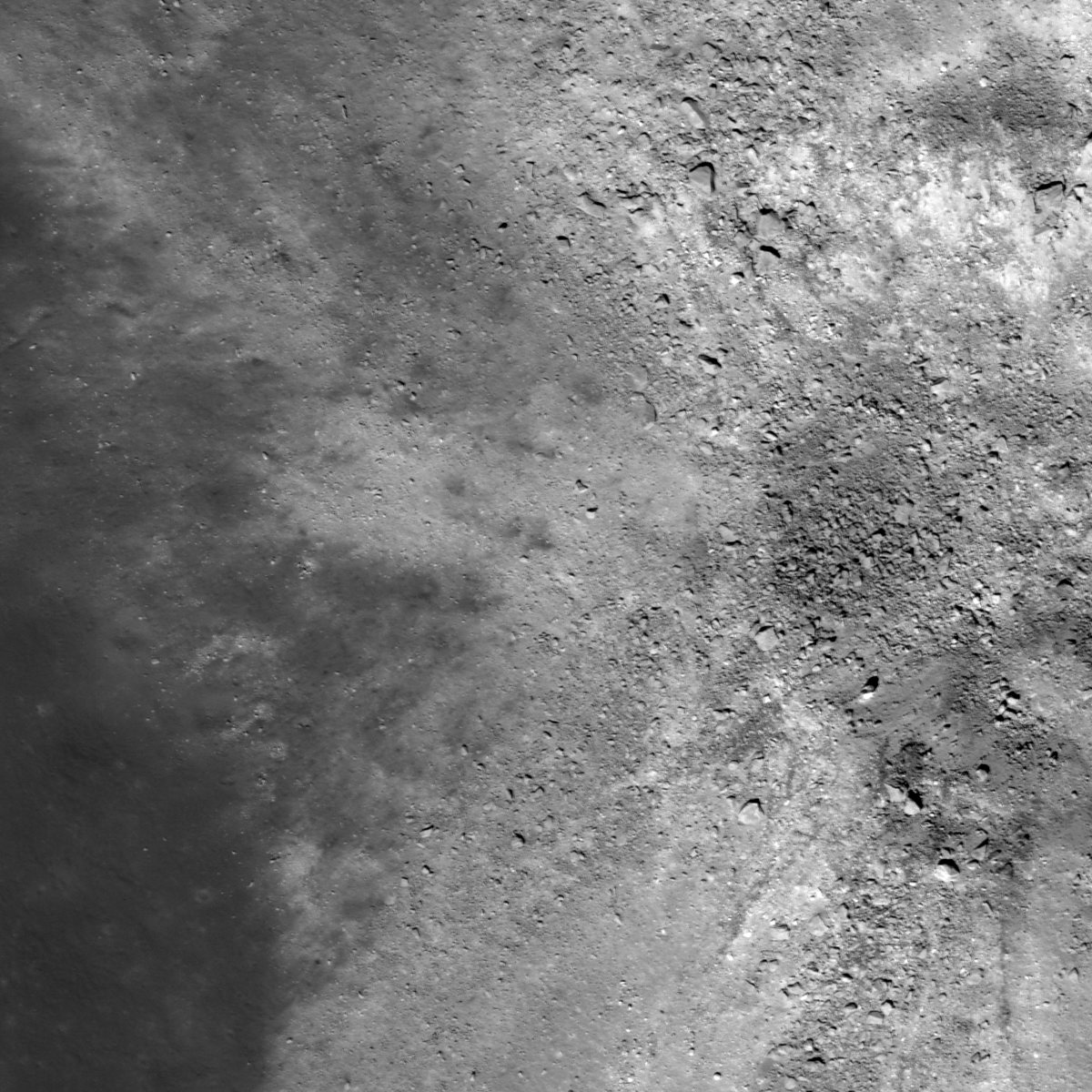
In many cases crater ejecta patterns on the Moon result in natural art. Unlike the ejecta on the Earth and Mars, ejecta on the Moon does not interact with an atmosphere. Thus the final pattern on the ground is solely a reflection the dynamics of impact cratering.
Today's Featured Image highlights the western half of an unnamed crater located in the middle of Mare Serenitatis. The crater diameter is about 470 meters. As seen in the second picture (a zoom-out of the same NAC frame), one third of the ejecta blanket (the western portion) is missing, probably due to an oblique impact from west to east. In the top image (near the crater center), almost all of the boulders are ejected in the northwest and southwest direction. The fine particles, however, extend out to the west in patterns not unlike a delicate lace. Studying the full variety of craters with distinctive ejecta patterns is key to understanding the dynamics of oblique impact events.
Explore this beautiful ejecta blanket in the full NAC frame!
Related posts:
Ray of boulders, Slice of Mare, How did I form?, Asymmetric Ejecta
Published by Hiroyuki Sato on 17 November 2011

